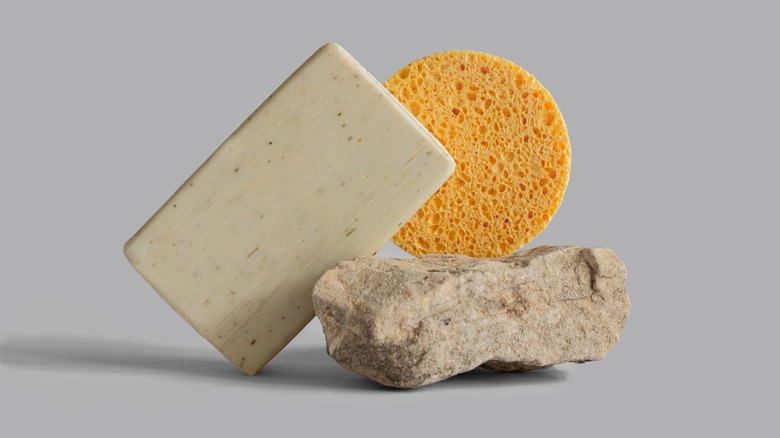What Did People Use Before Toilet Paper?
In the United States, toilet paper is used by almost everyone (unless you are one of the 12% of Americans with access to a bidet). In fact, Americans collectively spend billions of dollars on toilet paper each year, according to Statista. It may seem impossible that people ever lived without it, but even today, many people across the globe don't use toilet paper, with some reports suggesting that 70% of the world does not use it.
Still, whether you are using toilet paper or a bidet, these are relatively recent inventions. Toilet paper was first commercially available in the mid-1800s in the Western world and was refined in the early 1900s, according to History. Yet human civilizations have existed for hundreds of years before the invention of toilet paper, and people still went to the bathroom. So what, exactly, did people use to clean themselves before toilet paper was invented?
Humans have used a variety of tools and materials to clean themselves
Culture and climate determined the tools and materials that people used as an alternative to toilet paper. Hygiene sticks have been popular throughout history. One example dates all the way back 2,000 years ago in China where they used a bamboo stick with a cloth wrapped around it, according to LiveScience. Meanwhile, ancient Romans might have used a communal bath sponge on a stick that was cleaned in vinegar or salt water, explains History.
Besides sticks, the Greeks and Romans would also use moss or leaves, notes History. There is also evidence that they used cloth, but this was seen as something only the wealthy could do as cloth was made by hand, so using it to clean yourself after the bathroom would have been seen as wasteful.
Other materials used throughout history include water, grass, stones, animal furs, and seashells, per LiveScience. In terms of paper, it wasn't until the 6th century in China that a scholar named Yen Chih-Thui made the first known reference to using paper for cleansing after going to the bathroom, according to History.


